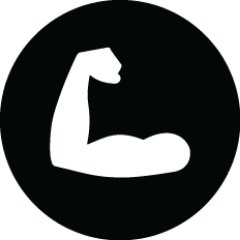
By Yolanda Lau
Starting a new job can be exciting, but also overwhelming. There’s so much to learn and do, and you want to make a good impression from day one. While many companies have formal onboarding processes to help integrate new hires, the reality is that these programs are often lacking, especially in smaller or rapidly growing organizations.
Whether you’re coming onboard as an employee, on-demand consultant, or fractional executive, you can take charge and ensure a smooth transition by onboarding yourself.
Here’s how:
1. Do your research
Before your first day, learn as much as you can about your new company. Learn about their mission, values, culture, products, services, and industry. Familiarize yourself with their social media accounts, blog, and website. This will give you a head start on understanding the company’s priorities and how you can contribute. Look up your new employer in the news – find out if there have been any recent developments about the company.
2. Take charge of the process
Don’t wait for information to fall into your lap – go out and proactively seek what you need to start contributing meaningfully. Ask questions to understand priorities, gather essential resources, and identify quick wins you can achieve in your first 30-60-90 days. Taking control shows initiative and positions you to have an immediate positive impact. No one is more invested in your success than you are.
3. Develop your own perspective
As a fresh set of eyes, one of the most valuable things you bring to the table is a new perspective. Observe, analyze, and form your own opinions about the organization – what’s working well, what could be improved, key opportunities and challenges. Don’t be afraid to respectfully share your thoughts, hunches and ideas, even if they diverge from the status quo. Fresh viewpoints, grounded in curiosity and good faith, can spark productive discussions.
4. Dive in and add value
New hires often get bombarded with information – documents, decks, demos, org charts. Don’t get bogged down. Do make time to absorb the material, but look for ways to add value immediately, even in small ways. High-performing teams expect you to quickly translate knowledge into action. Volunteer for projects, share relevant articles, offer to take meeting notes. Active engagement shows you’re there to contribute, not just learn.
5. Identify priorities and early wins
While there’s a lot to learn, focus on the most critical areas first – certain information will be more important than others, depending on upcoming projects and decisions. Identify knowledge gaps and areas where your skills can have the biggest impact. What knowledge gaps need to be filled most urgently? Where can your skills move the needle? Aim for some early quick wins to build credibility and momentum. Having a prioritized learning plan creates structure and accelerates your ability to make meaningful contributions.
6. Embrace a leadership mindset
Even as a new hire, approach your role with a leadership mindset. Imagine yourself running meetings, making decisions, and driving projects forward. This proactive attitude empowers you to shape your experience and contribute more from the beginning.
7. Understand decision-making frameworks
Understand how decisions are made at your new company. What are the key metrics, priorities and frameworks used? Knowing how and when important decisions get made allows you to focus your onboarding on the most relevant information and stakeholders.
8. Build key relationships
Relationships are key. Invest time in getting to know your manager, colleagues, and collaborators. Schedule one-on-one meetings, ask about their roles, and seek feedback. Building strong connections helps you navigate the organization, feel included, and collaborate more effectively. Growing your network internally provides a web of support as you get up to speed.
9. Embrace continuous learning
Learning is continuous. Embrace an attitude of constant growth. Ask questions, seek feedback, and be open to new ideas. Adopt a mindset of humility and curiosity. A commitment to lifelong learning keeps you nimble and adaptable as the company evolves.
By following these nine strategies, you’ll take control of your onboarding and quickly become a valuable asset. You’ll demonstrate the very qualities that make you a great fit for the long haul – initiative, curiosity, humility, and a willingness to take action. By proactively onboarding yourself, you’ll gain a running start, become a high-value team member faster, and showcase the skills that make you a perfect fit for the company’s culture.

Yolanda Lau is an experienced entrepreneurship consultant, advisor, and Forbes Contributor. She is also an educator, speaker, writer, and non-profit fundraiser.
Since 2010, she has been focused on preparing knowledge workers, educators, and students for the future of work.
Learn more about Yolanda here.










